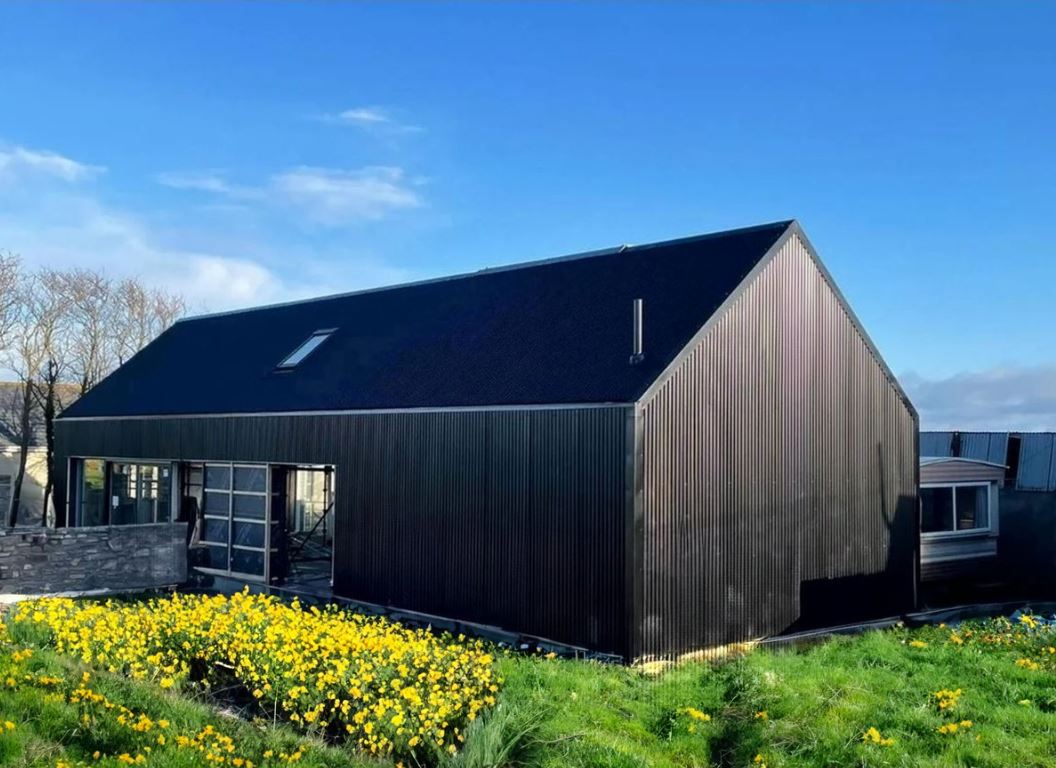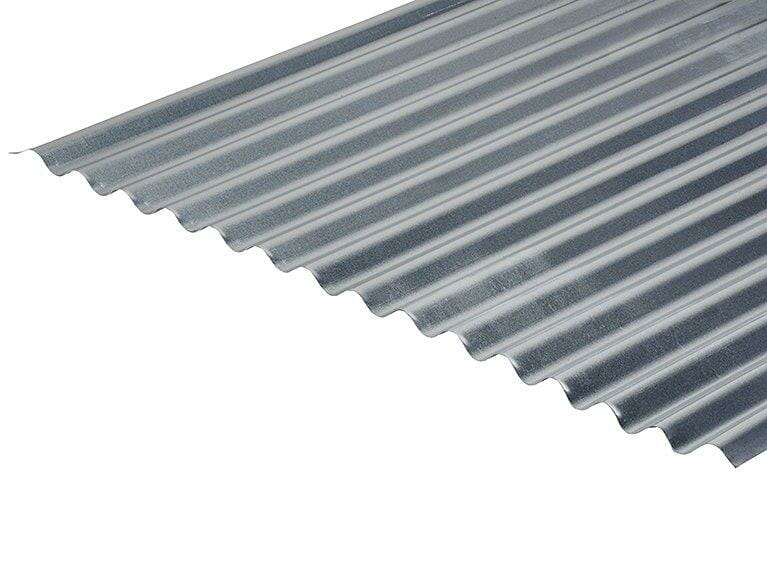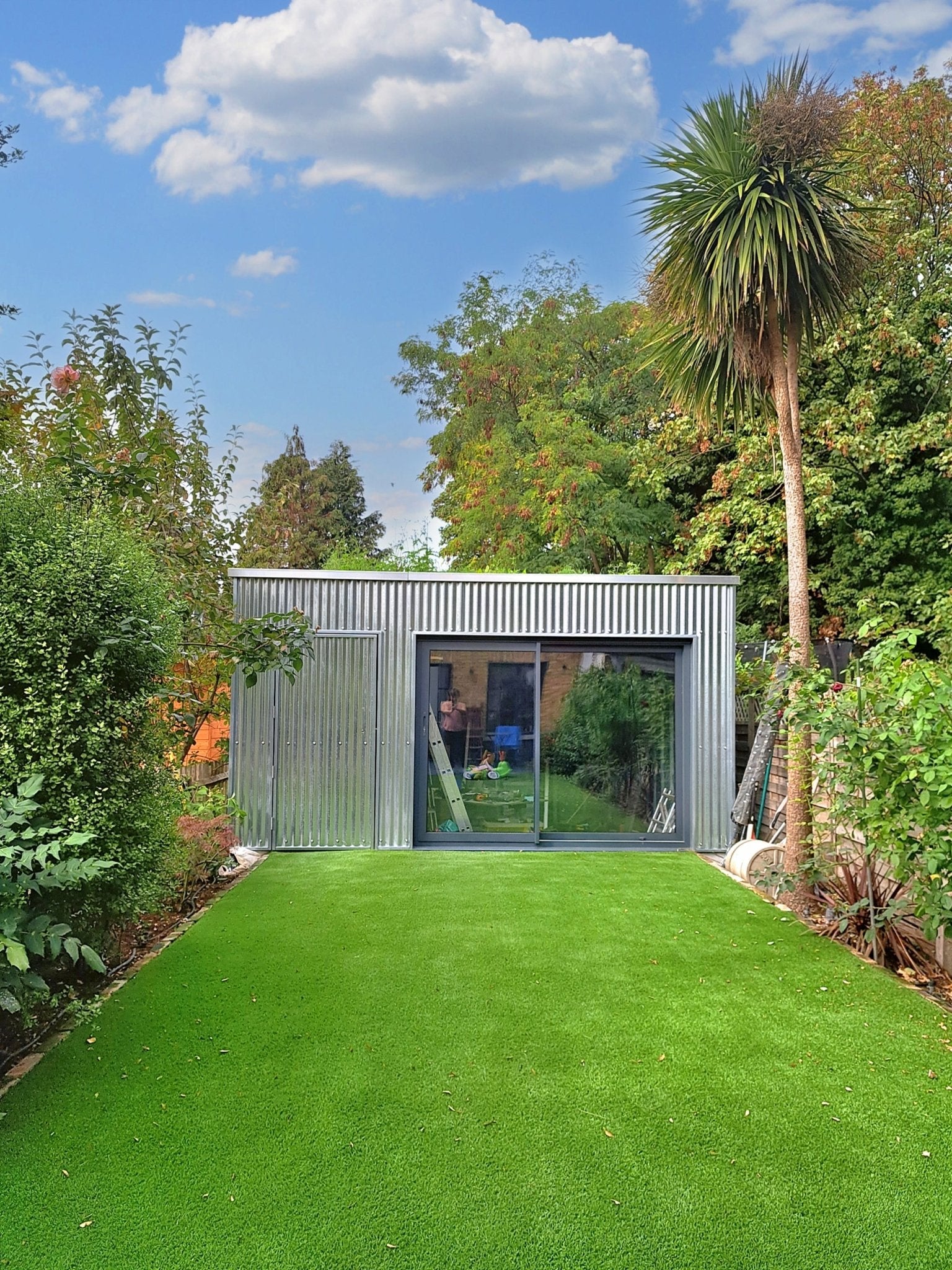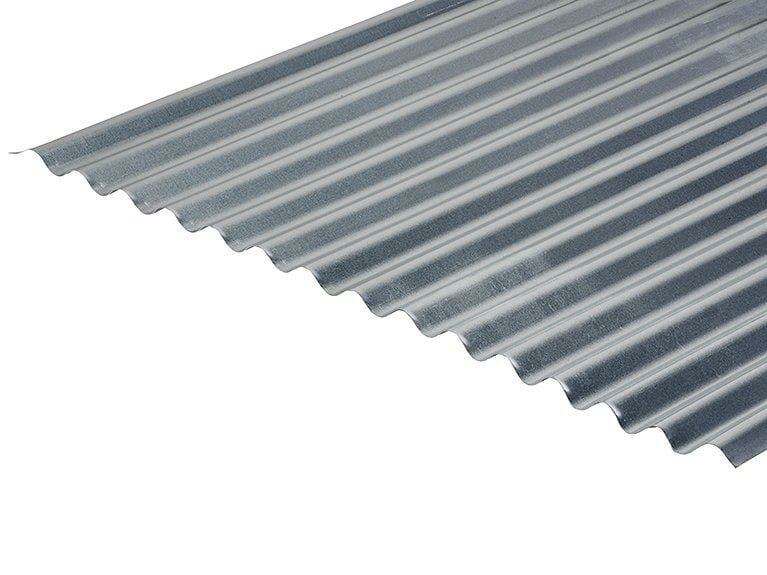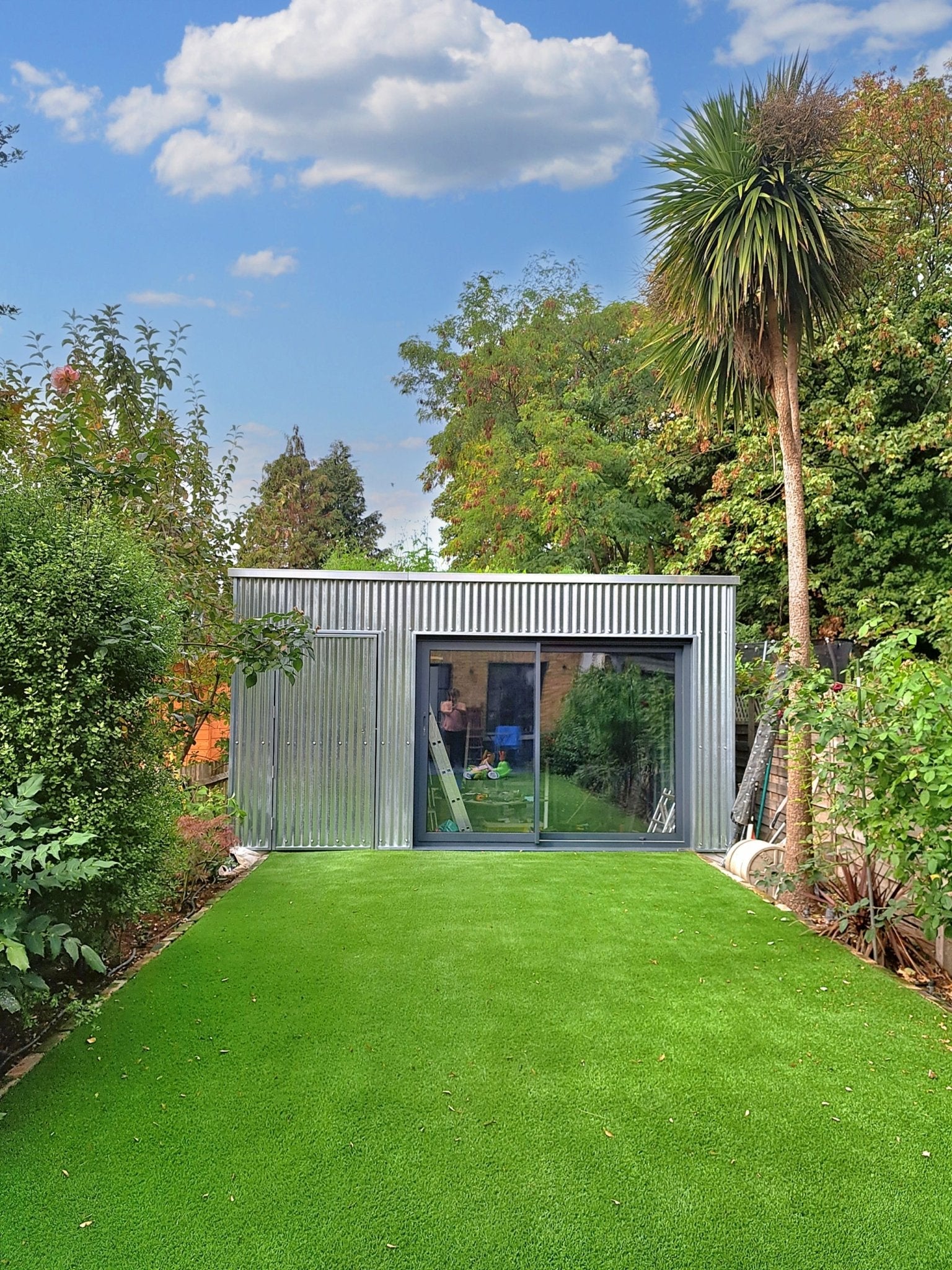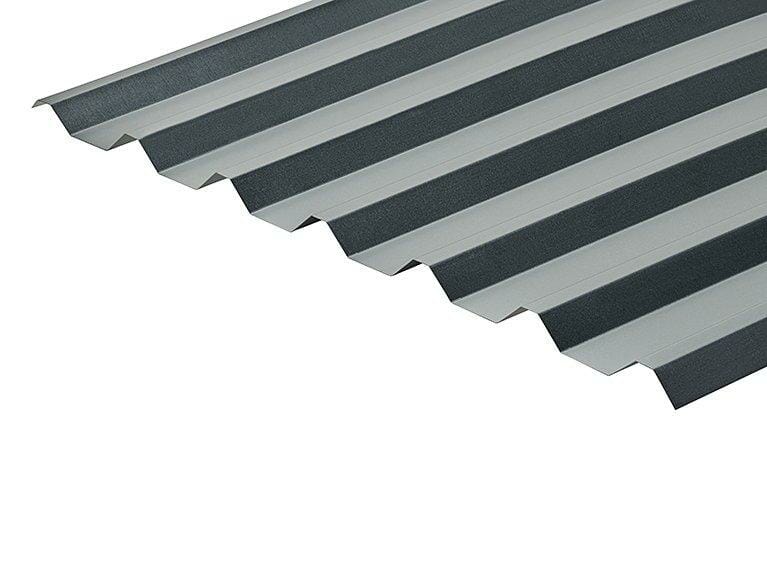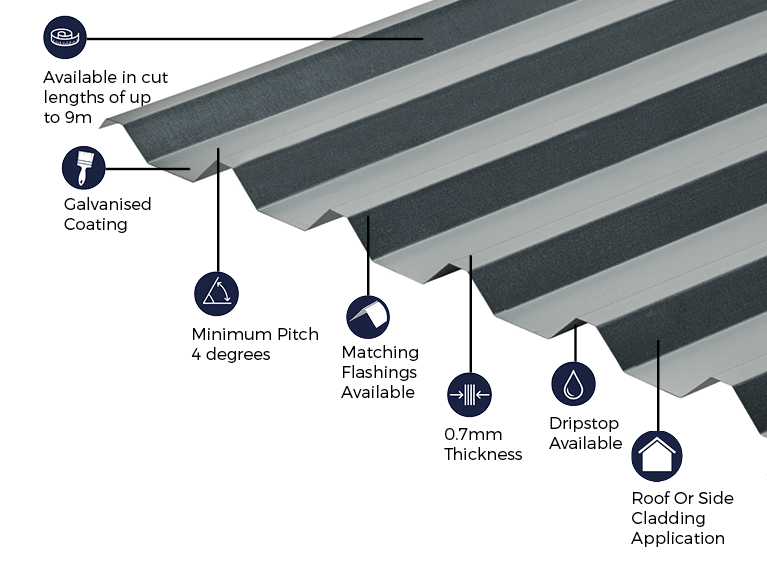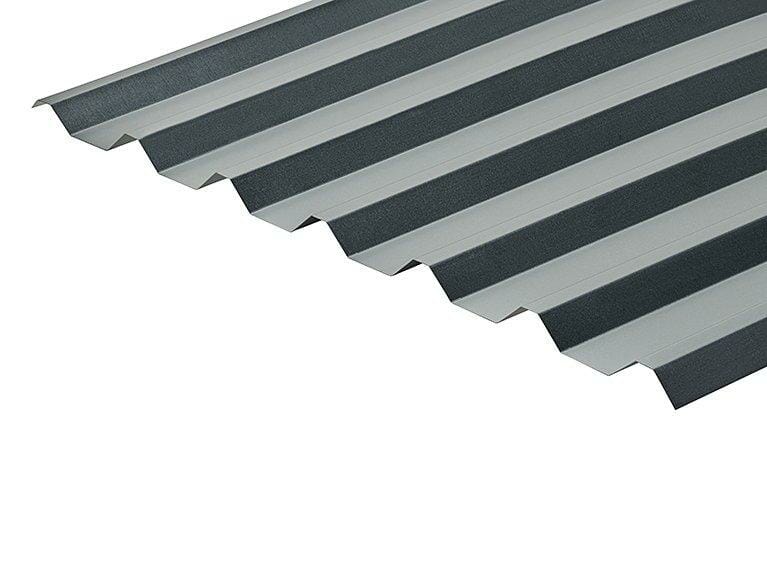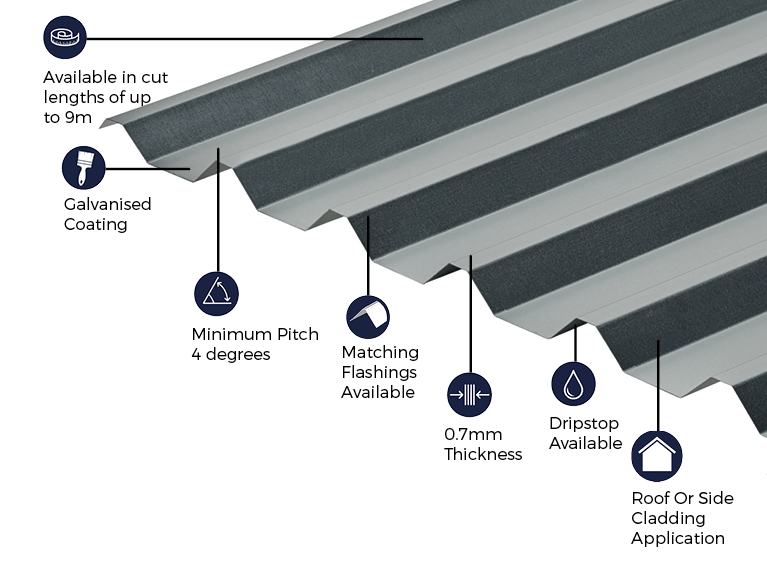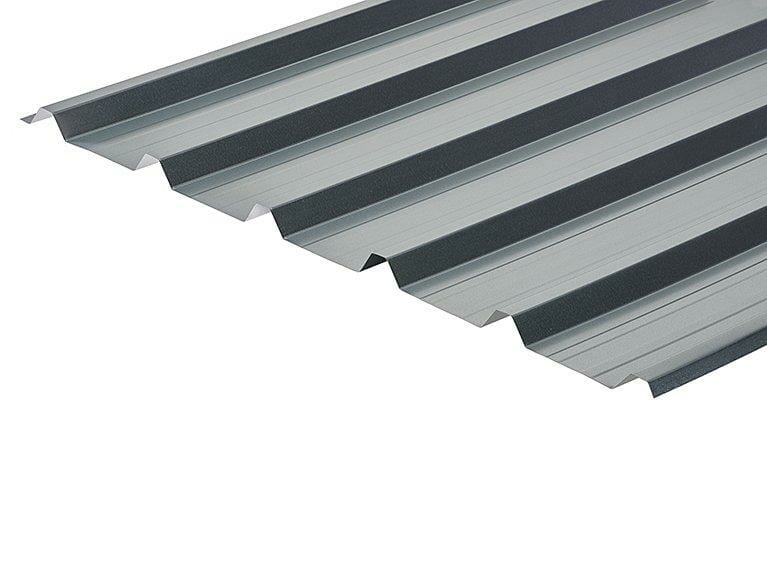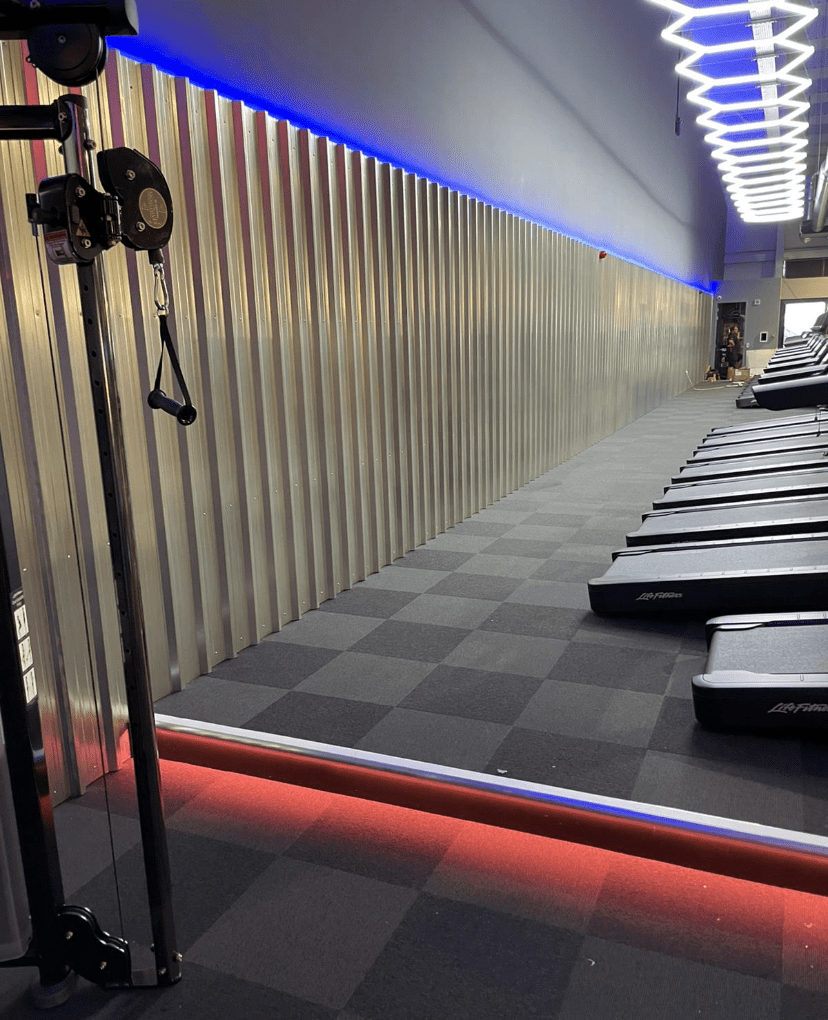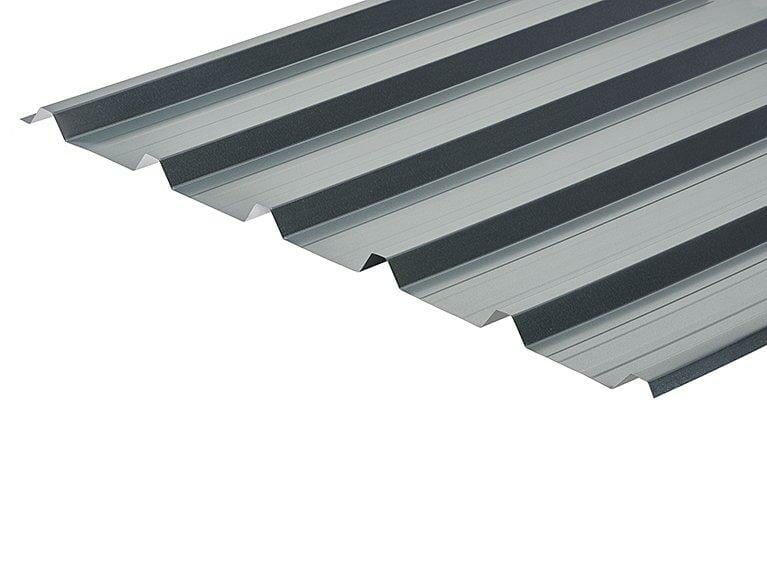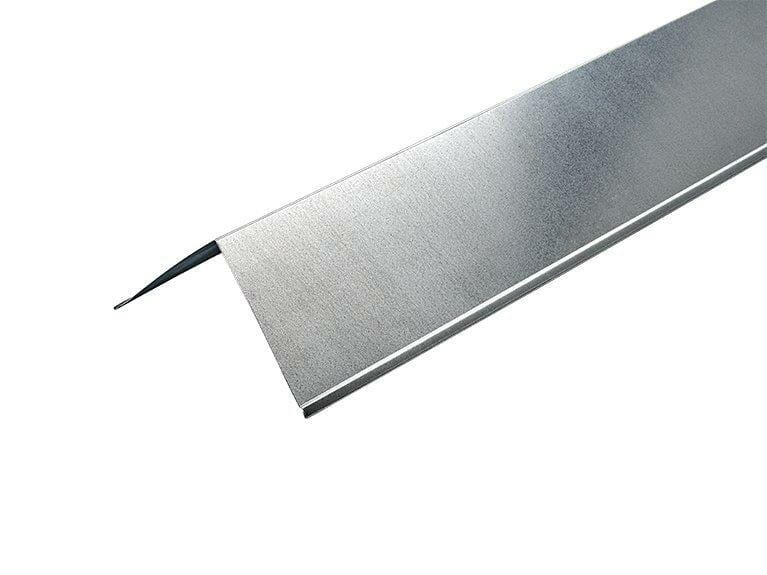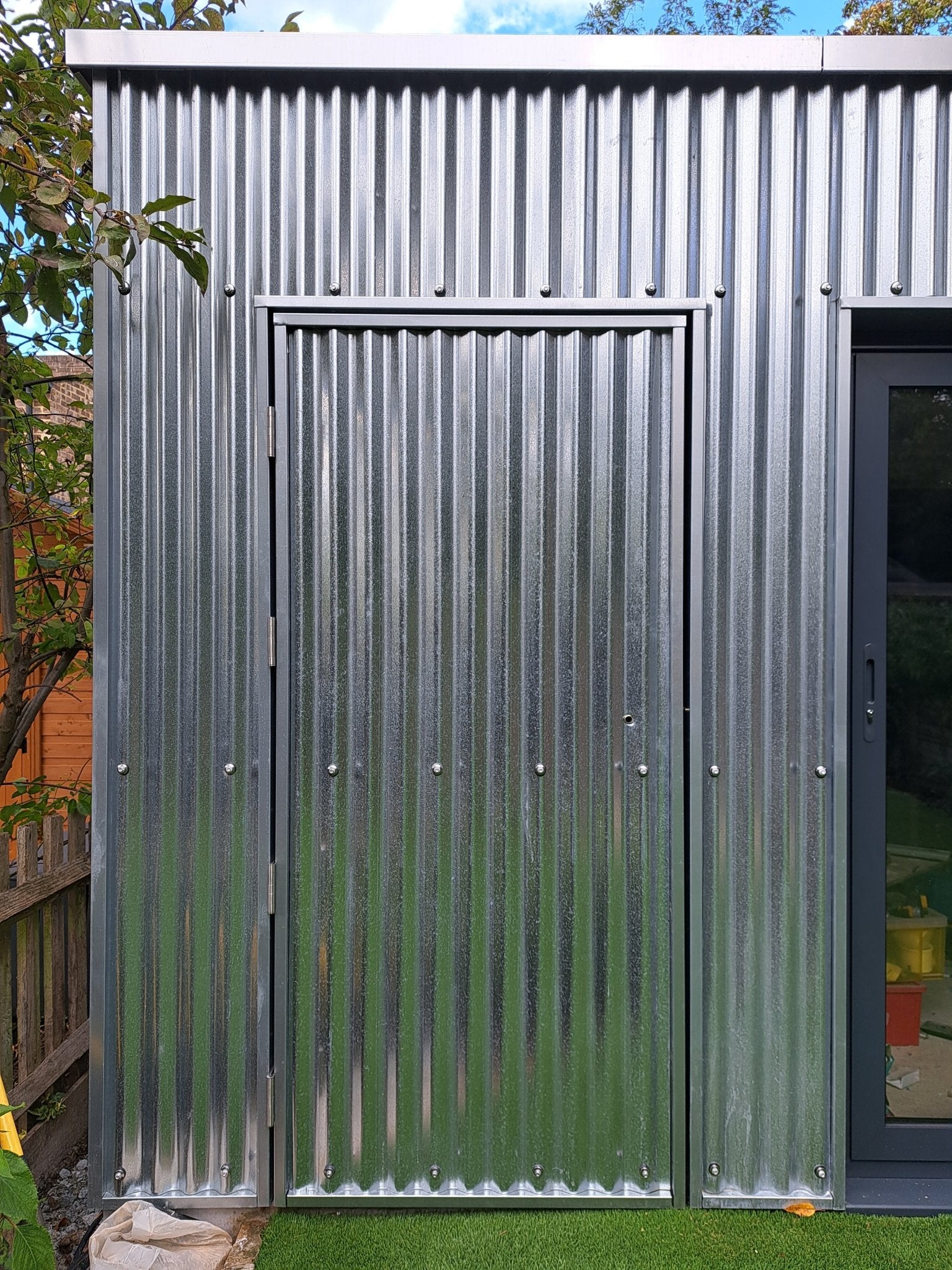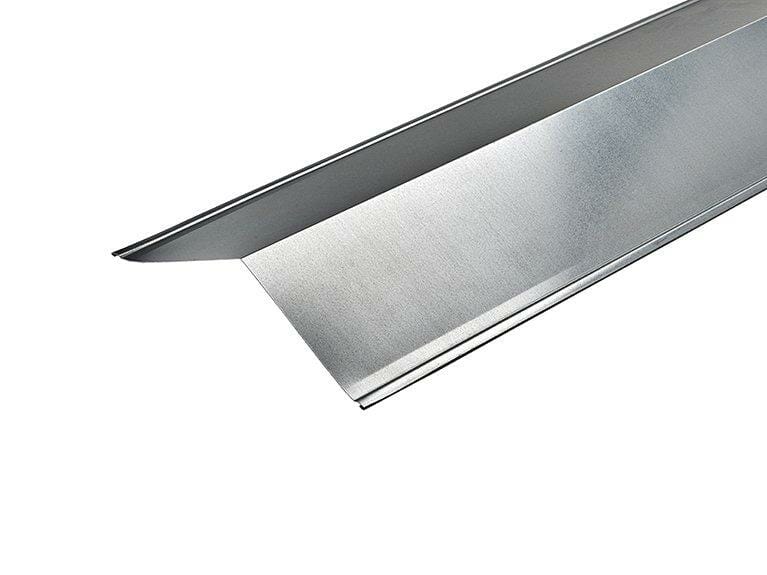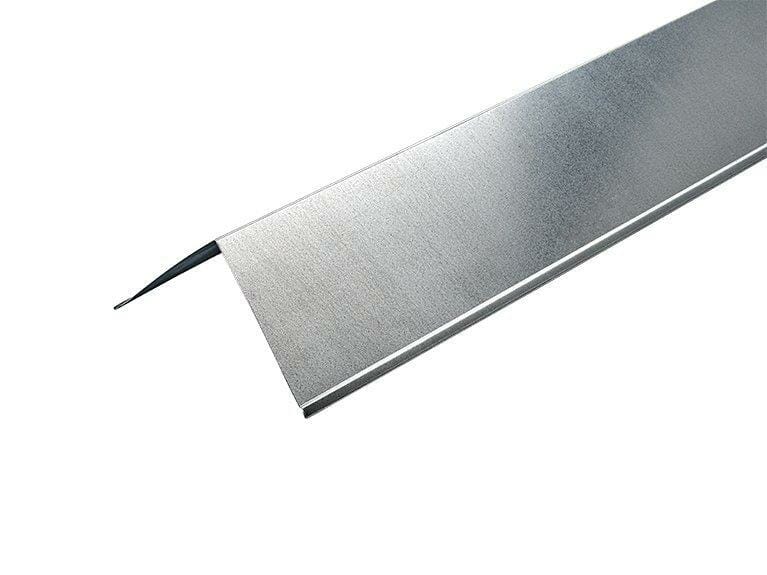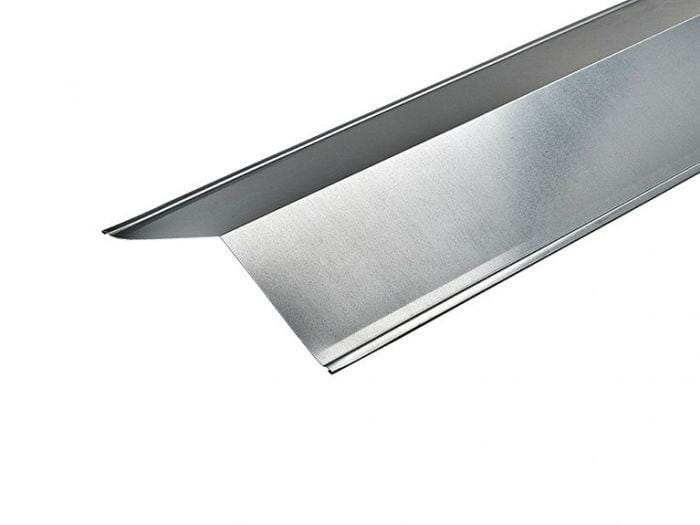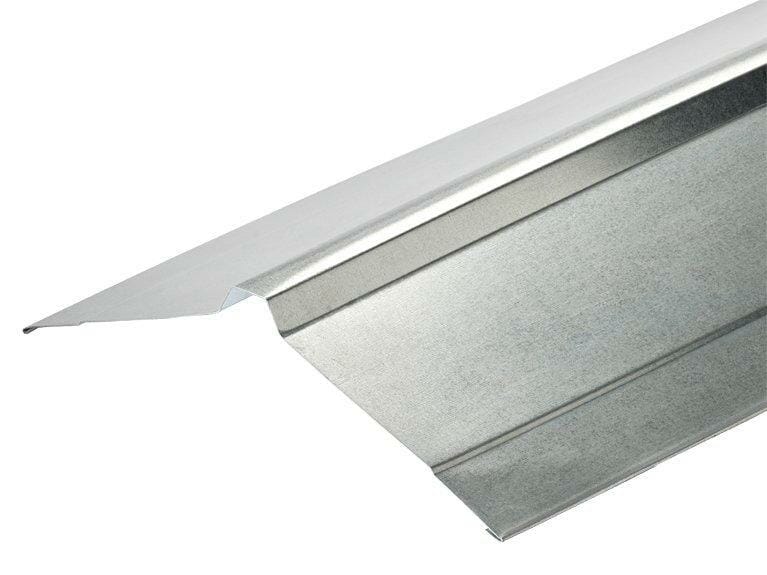Did you know that metal roofs, including galvanised steel sheets, can last up to three times longer than traditional asphalt shingles?
With a lifespan ranging from 25 to 50 years—or even longer with proper maintenance—galvanised roof sheets are one of the most durable and cost-effective roofing solutions available.
But what really determines how long they last?
What factors can shorten their lifespan, and how can you ensure your roof stays in top shape for decades?
This guide covers everything you need to know about galvanised roof sheets, including key factors affecting longevity, maintenance tips, and whether they are the right choice for your project.

A UK Garden room in metal wall cladding, materials supplied by Trade Warehouse.
The Science Behind Galvanisation: How It Extends Roof Life
Galvanised roof sheets are made from steel coated in a protective layer of zinc, which acts as a barrier against moisture, corrosion, and environmental damage. This zinc coating protects the steel in two ways:
- Barrier protection: The zinc layer acts as a physical shield between the steel and the elements, preventing direct exposure to moisture and air.
- Sacrificial protection: Even if the coating is scratched, the zinc will corrode before the steel, ensuring the underlying metal remains intact.
The galvanisation process significantly improves durability compared to untreated steel, making galvanised roofing sheets a preferred choice for industrial, agricultural, and domestic applications. However, if you need additional protection, Plastisol coated roof sheets offer even better resistance against extreme weather conditions.
What’s the Real Lifespan of Galvanised Roof Sheets?
On average, galvanised steel roof sheets last between 25 and 50 years, depending on the environment, maintenance, and level of exposure to harsh elements.
Factors That Affect Longevity
- Weather conditions – Prolonged exposure to rain, snow, hail, or excessive sunlight can shorten the lifespan.
- Environmental exposure – Areas near the coast or industrial zones with high pollution levels may cause faster corrosion.
- Installation quality – Poorly installed sheets with inadequate ventilation and drainage can suffer premature deterioration.
- Maintenance efforts – Regular cleaning and inspections significantly extend lifespan by preventing minor issues from becoming major problems.
While galvanised sheets are known for their resilience, understanding how different conditions affect them can help you make informed choices and get the most out of your investment.
Environmental Factors That Can Impact Your Roof’s Lifespan
1. Harsh Weather Conditions
- Heavy rainfall and humidity can lead to moisture retention, increasing the risk of corrosion.
- Snow and ice can accumulate, adding weight stress and accelerating rusting if water gets trapped.
- Strong winds and hail can cause physical damage, weakening the protective zinc layer.
2. Corrosion Risks in Different Environments
- Coastal areas have high levels of salt in the air, which speeds up the oxidation process.
- Industrial areas with chemical exposure and air pollution can also cause premature deterioration.
- Roofs in urban areas may experience acid rain, which can wear down protective coatings faster.
3. How to Minimise Environmental Damage
- Use additional coatings such as painted or plastisol-coated sheets for extra protection.
- Regularly clean debris and inspect for early signs of rust or damage.
- Ensure proper drainage and ventilation to prevent standing water from accumulating.
If you're looking for enhanced durability in demanding environments, Plastisol-coated roof sheets might be a better option, as they offer superior resistance to corrosion and UV exposure.
How to Measure Your Roof Before Replacing Galvanised Sheets
Before purchasing new roofing sheets, accurate measurements are essential. Incorrect dimensions could lead to material wastage or structural weaknesses in your installation.
Steps to Measure Your Roof Correctly
- Measure the total roof length and width – Multiply these to calculate the total area.
- Determine the pitch (slope) of your roof – This affects how many sheets you’ll need.
- Account for overlap and overhang – Galvanised sheets should overlap slightly to prevent leaks.
For a step-by-step guide, visit How to Measure the Pitch of a Roof.
Is a Galvanised Roof Worth the Investment?
The answer depends on your budget, location, and long-term needs.
✔ Pros:
- Long lifespan (25–50 years)
- Strong corrosion resistance
- Cost-effective compared to other metal roofing options
- Low maintenance requirements
❌ Cons:
- Can corrode if not maintained properly
- Heavier than alternatives like aluminium
Want to understand the financial side of it? Check out How Much Does a Metal Roof Cost? for a cost comparison.
Final Thoughts: Should You Choose Galvanised Roof Sheets?
Galvanised roof sheets offer durability, affordability, and weather resistance, making them a solid choice for various applications.
With a potential lifespan of up to 50 years, they remain one of the most cost-effective roofing options available.
However, proper installation and maintenance are key to ensuring you get the full benefits of a galvanised roof.
If you're looking for a long-term investment that can withstand the elements, explore galvanised roof sheets today.

